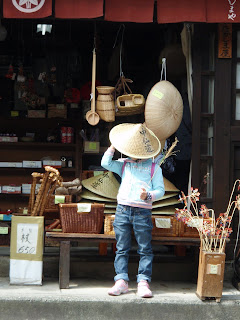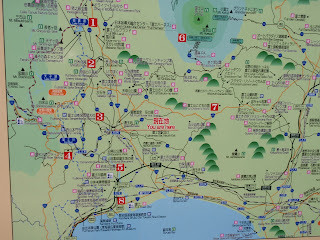
The Sky Tree Tower, 610 metres, will be standing new among
the many high rise buildings in Tokyo ... waiting for you to take a good shot :)
Sky Tree's official website: http://www.tokyo-skytree.jp/english/
My Diary of Holidays in Japan (& Overseas)







 Enjoy a 1 km walk along one of the oldest street in Japan (Kiso Road) and feel the atmosphere of old Japan during Edo era (1603-1868). During the era Tokyo and Kyoto was connected through the Nakasen-do-highway. Off this highway, was the Kiso road, one of the famous road for sightseeing and Narai-jyuku was a village located on this route. This old village has been maintained over the years for historical and academic value.
Enjoy a 1 km walk along one of the oldest street in Japan (Kiso Road) and feel the atmosphere of old Japan during Edo era (1603-1868). During the era Tokyo and Kyoto was connected through the Nakasen-do-highway. Off this highway, was the Kiso road, one of the famous road for sightseeing and Narai-jyuku was a village located on this route. This old village has been maintained over the years for historical and academic value.







 For more photos click "title" above, to connect to Picasa Album. Photos were taken on August 10 & 11, 2009 during our stay in Matsuzaki city, West of Izu.
For more photos click "title" above, to connect to Picasa Album. Photos were taken on August 10 & 11, 2009 during our stay in Matsuzaki city, West of Izu.





 You can make your own bag using a square type cloth of various color like these ones. This cloth is called furoshiki, a traditional Japanese cloth that was traditionally used to wrap gifts/presents, bring books, but nowadays it has become an alternative to the new style of fashionable bags. Many size and color of furoshiki are available in department stores.
You can make your own bag using a square type cloth of various color like these ones. This cloth is called furoshiki, a traditional Japanese cloth that was traditionally used to wrap gifts/presents, bring books, but nowadays it has become an alternative to the new style of fashionable bags. Many size and color of furoshiki are available in department stores. To those visiting Japan and see Mt Fuji, come to Fujinomiya station. You may also find this
To those visiting Japan and see Mt Fuji, come to Fujinomiya station. You may also find this  map (in English) useful to understand what facilities are available surrounding Mt. Fuji.
map (in English) useful to understand what facilities are available surrounding Mt. Fuji.
 If you come to visit Japan during summer, get ready for the heat and steamy air, sometimes a sudden thunderstorm, lightening and rain. Tokyo summer is said to be hotter (average 33 to 36 degrees Celsius) than other cities in tropical countries, such as Singapore or Jakarta. Maybe it is due to crowded street and many high rise building that use air conditioning 24 hours non-stop, creating hot air from their exhaust system.
If you come to visit Japan during summer, get ready for the heat and steamy air, sometimes a sudden thunderstorm, lightening and rain. Tokyo summer is said to be hotter (average 33 to 36 degrees Celsius) than other cities in tropical countries, such as Singapore or Jakarta. Maybe it is due to crowded street and many high rise building that use air conditioning 24 hours non-stop, creating hot air from their exhaust system. 












 From what used to be over 700 Yen
From what used to be over 700 Yen 
